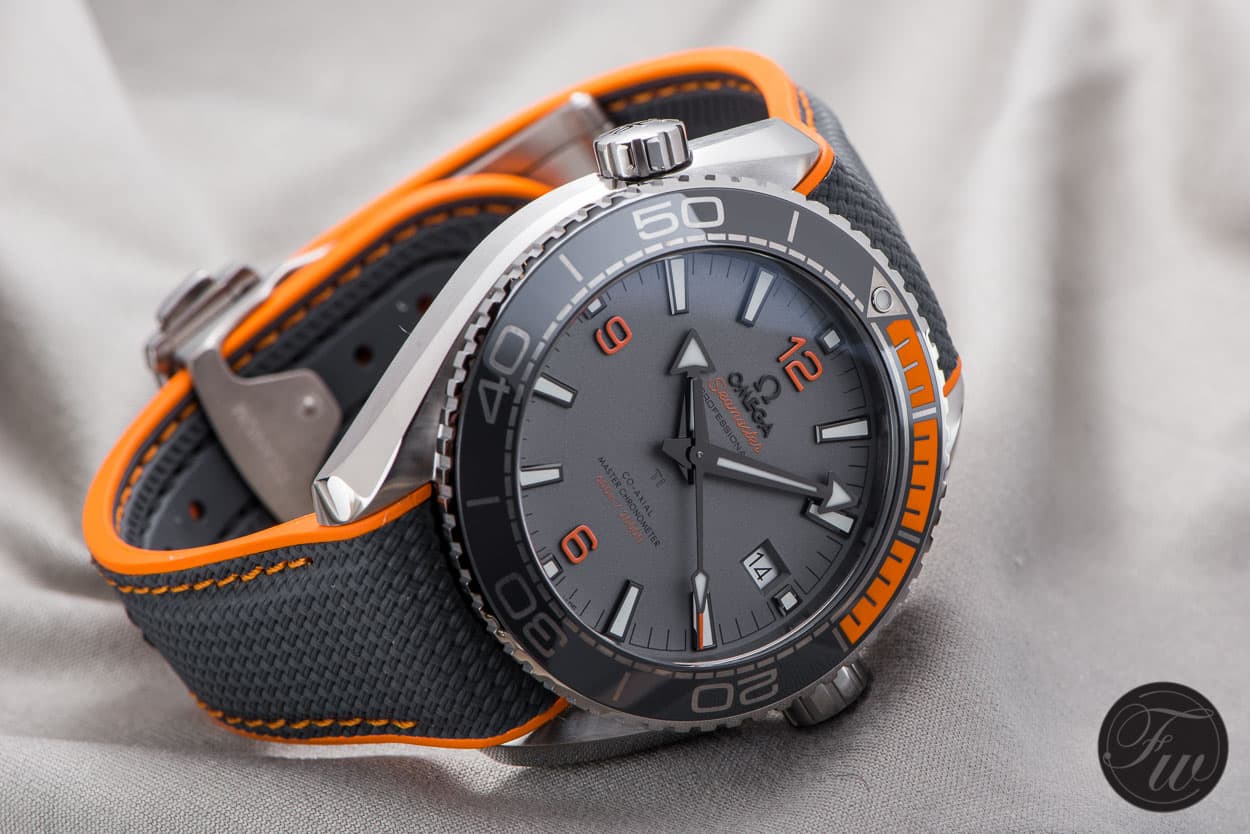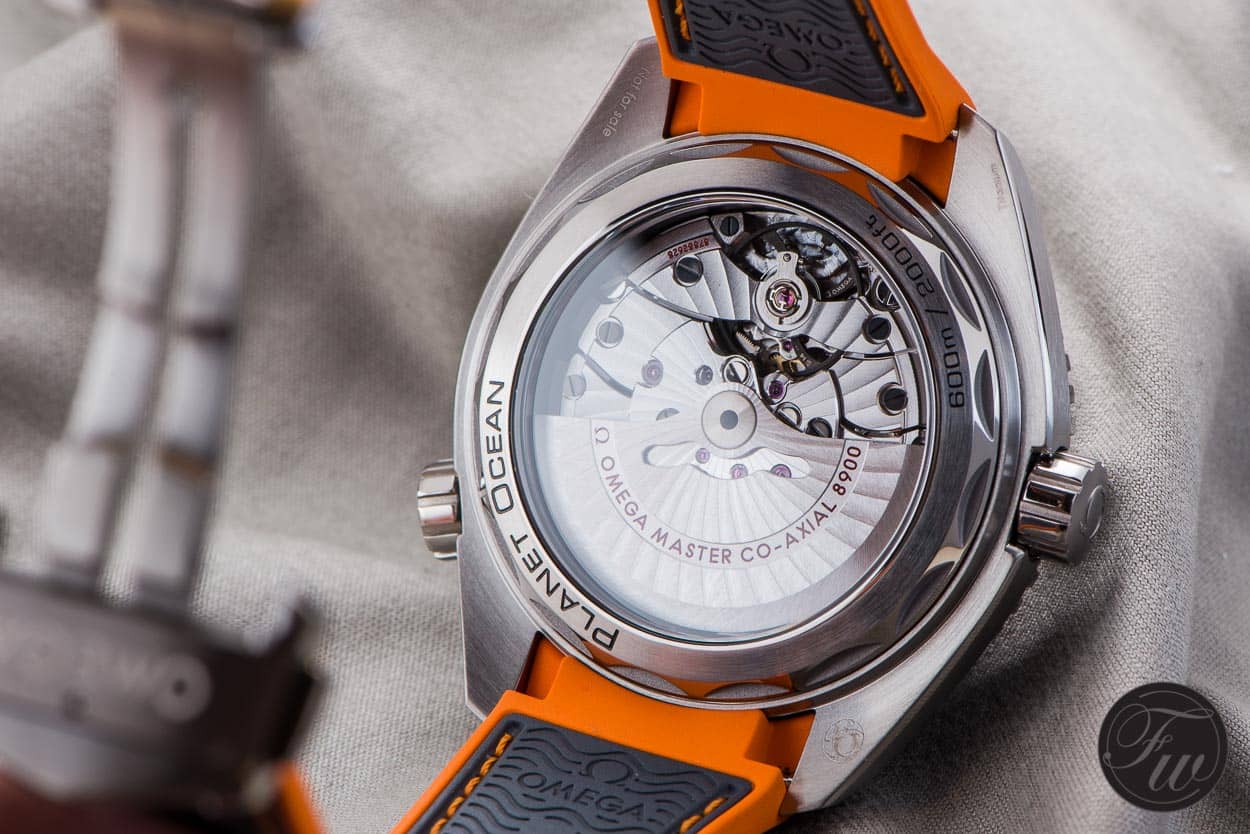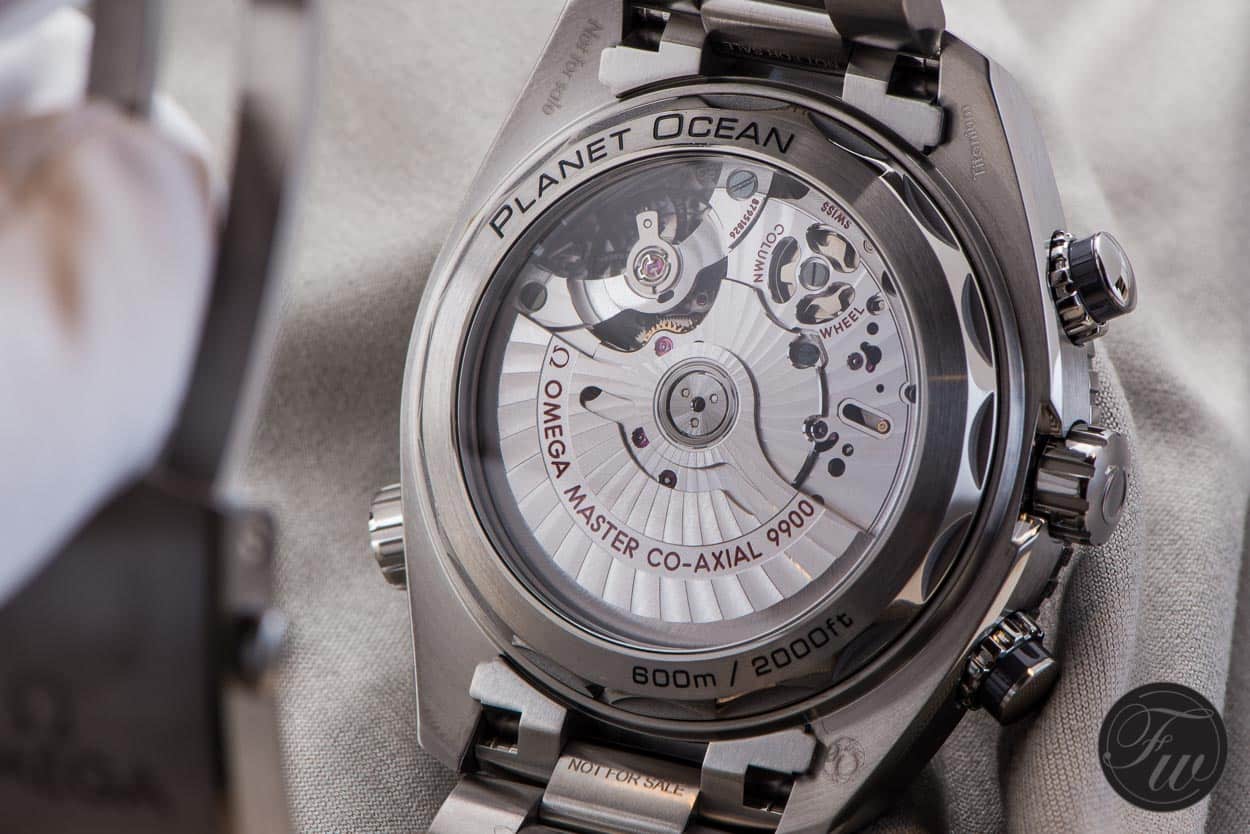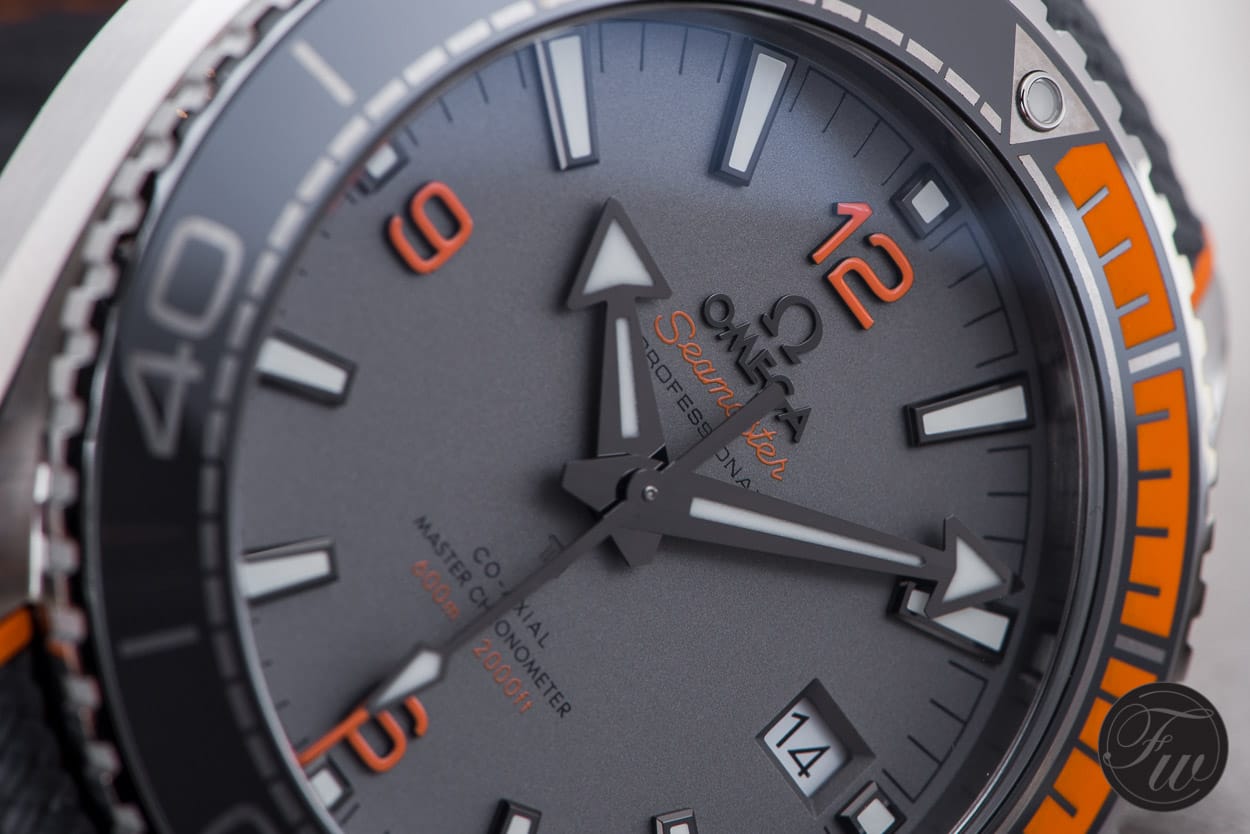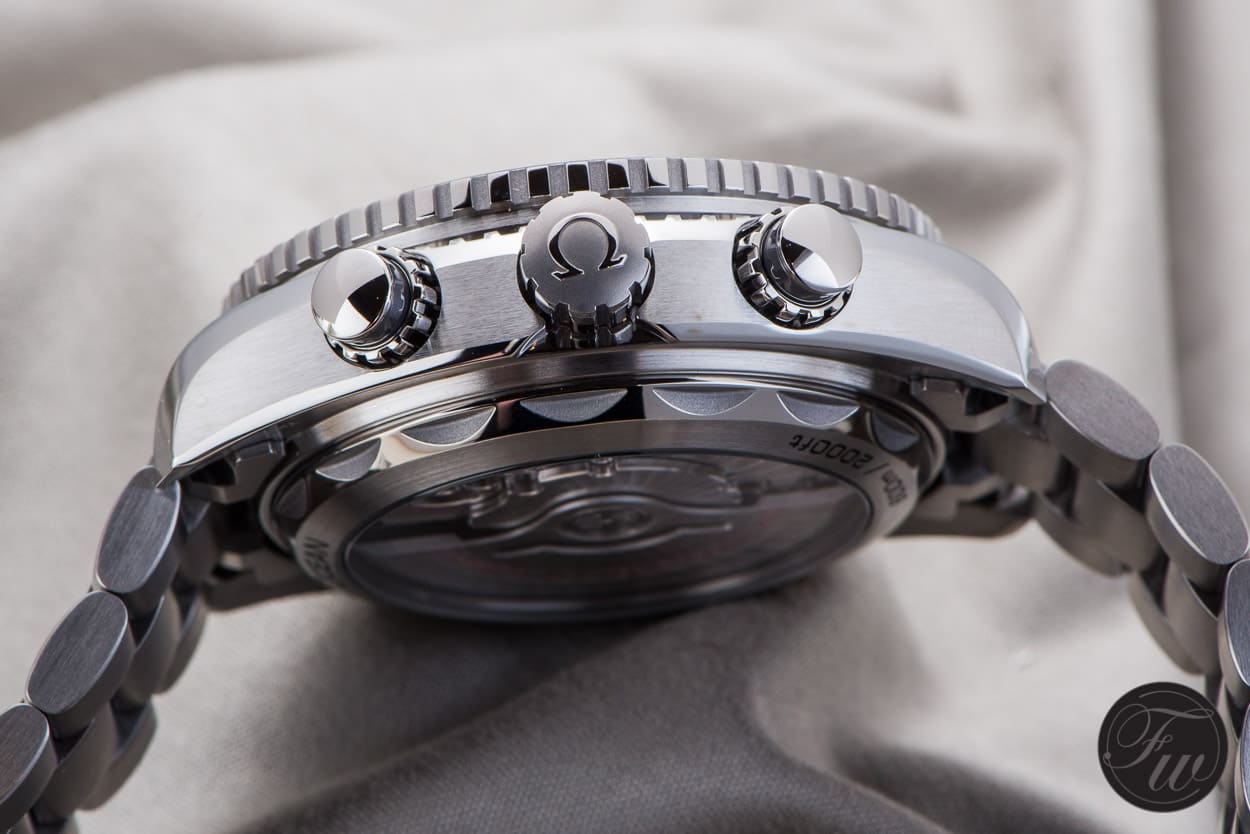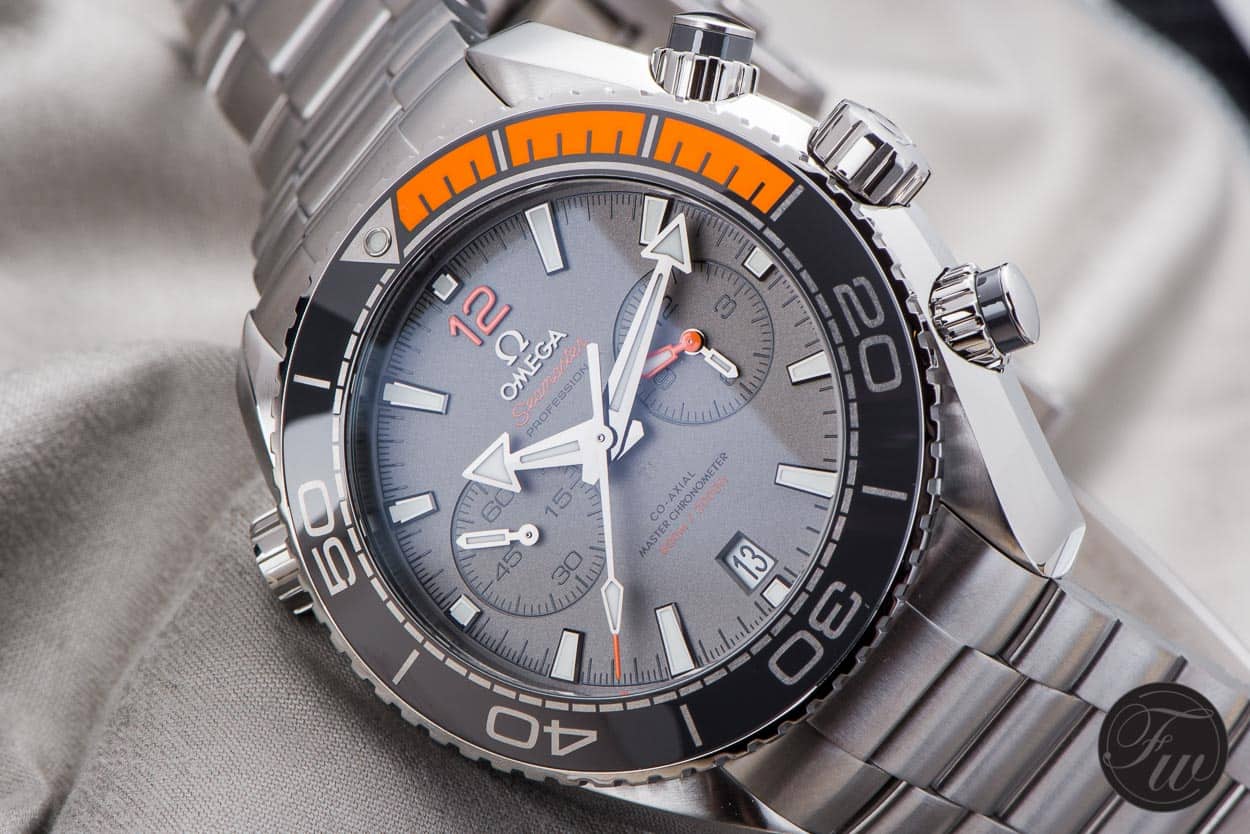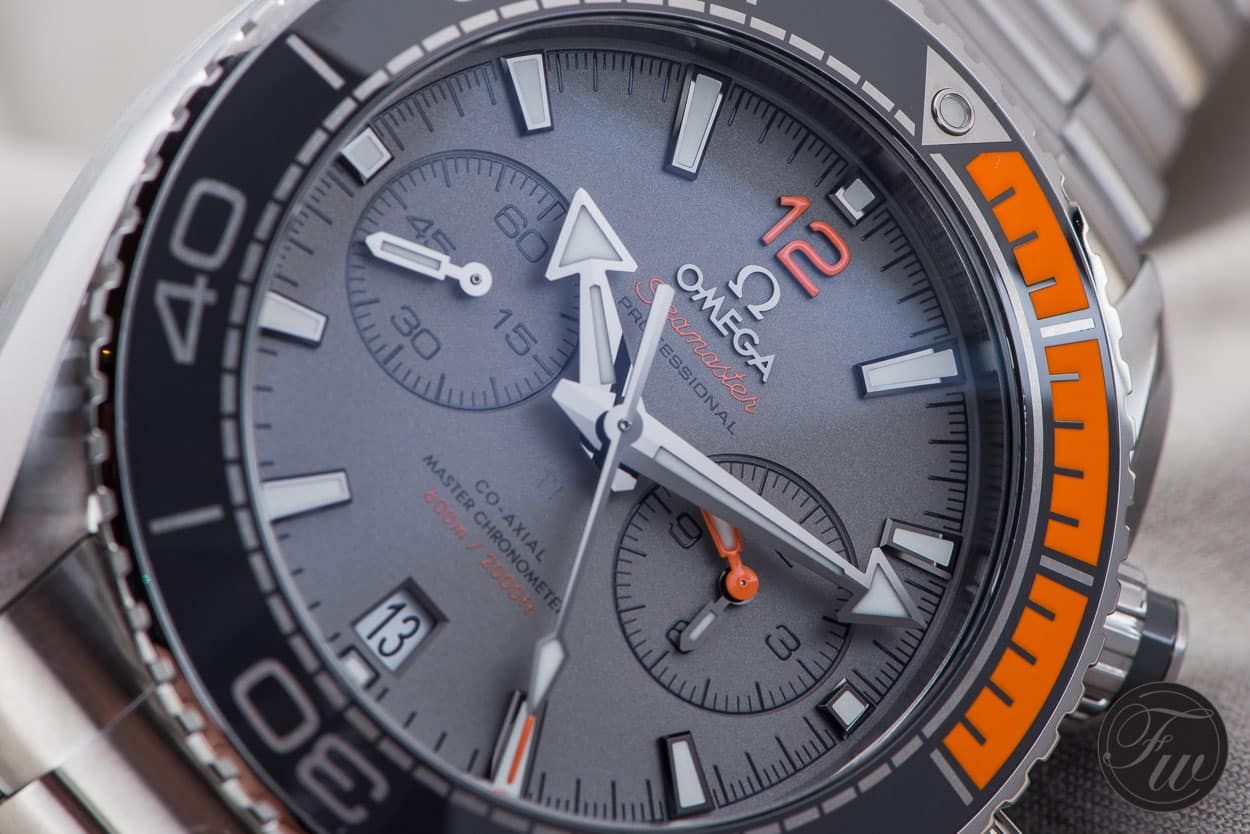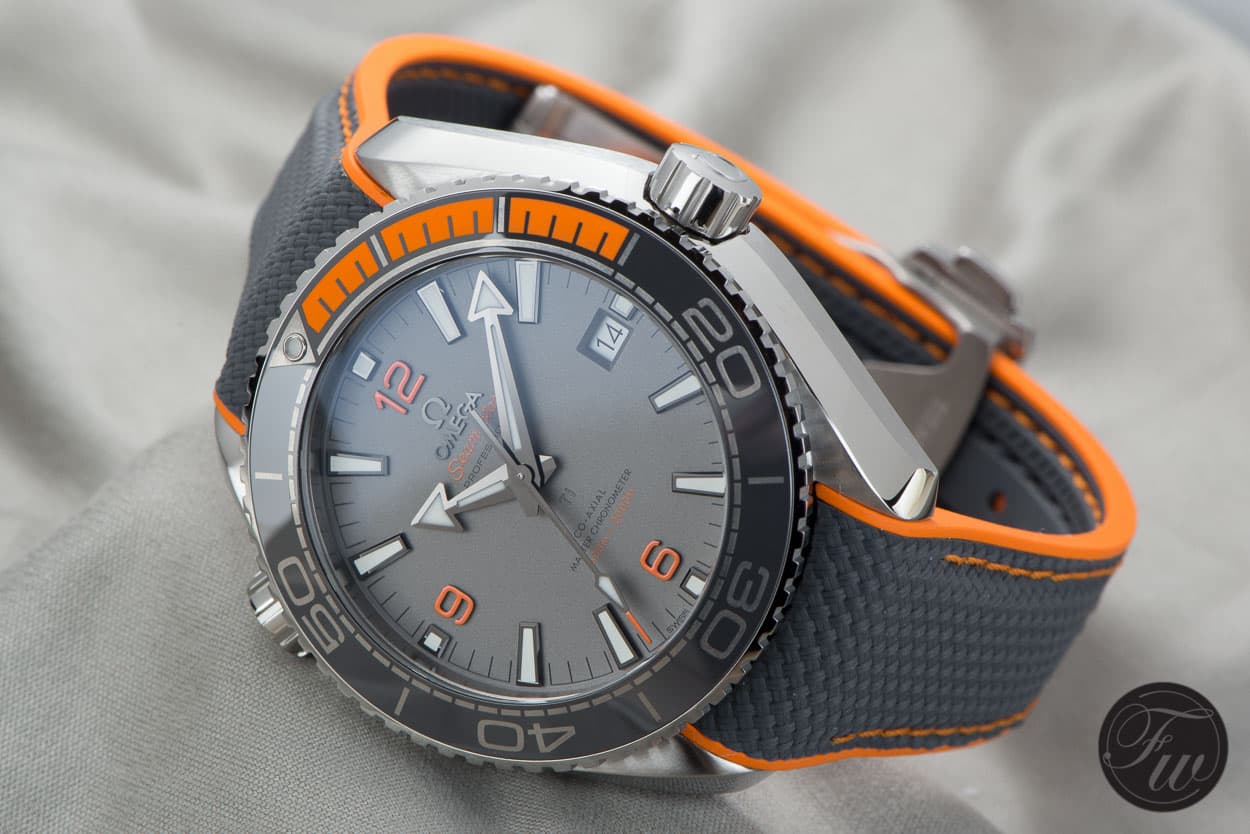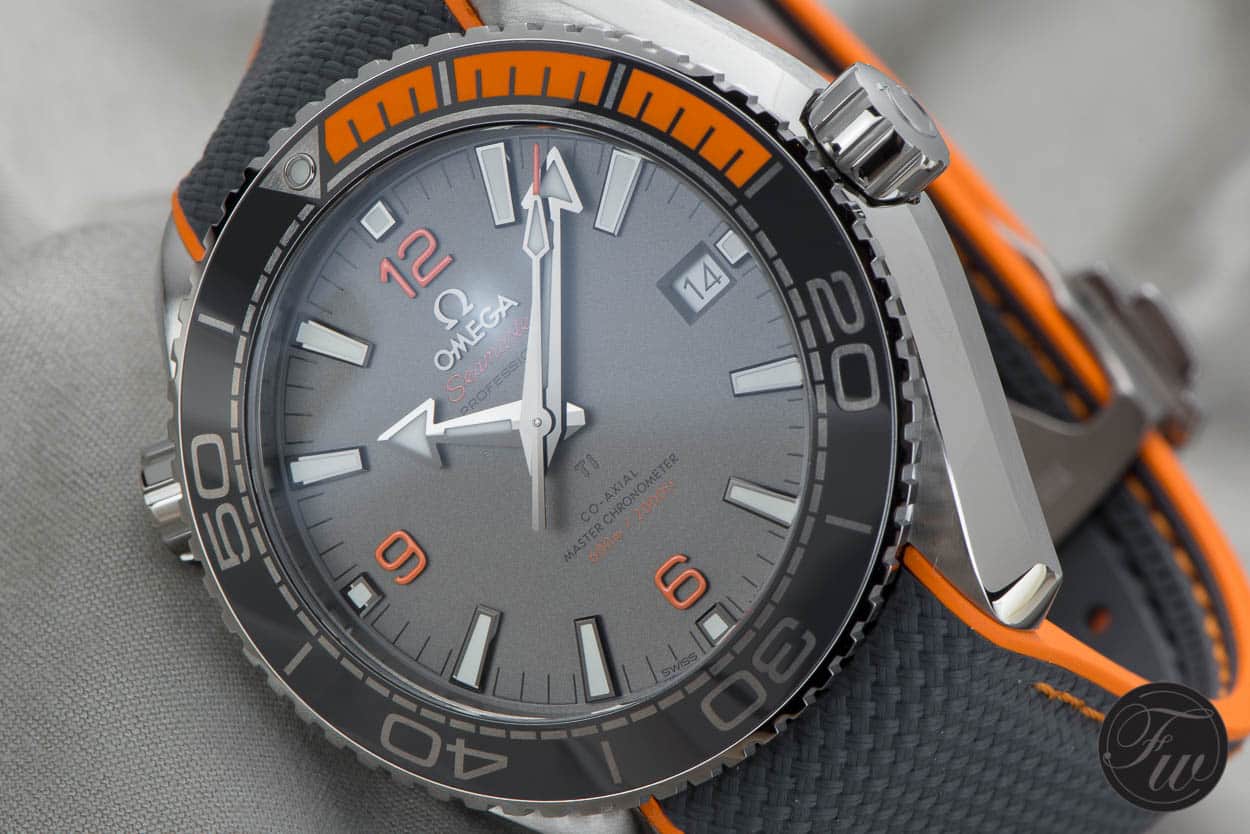Omega Seamaster Planet Ocean 600M Master Chronometer Titanium Hands-On
Seamaster Planet Ocean
We cover Omega and their Speedmasters every (Speedy) Tuesday, but hardly anything on the Seamaster Planet Ocean. Somehow, I have never considered a Planet Ocean for my private collection of watches when they first came out. That changed already a bit with the introduction of the caliber 8500 models a few years ago. It is an all-round performer, more versatile than the Speedmaster watches I collect myself. I have an old Seamaster 300M Ti Chronograph Diver from the 1990s that I use as my ‘holiday’ watch and while I love this model, it does show its 1990’s roots. The Planet Ocean is a bit more timeless due to some of the 1957 Seamaster 300 influences, but as I said, I rarely came across one that I really would love to own. Until now, 2016.
The new collection of Omega Seamaster Planet Ocean Deepblack models is quite impressive. But, there’s more. The new Seamaster Planet Ocean 600M Master Chronometer models in titanium with ceramic bezel and orange rubber inlay are worth exploring.
In this article we take a look at two of the new Omega Seamaster Planet Ocean Master Chronometer models. The regular ‘three-hand’ version with caliber 8900 and the chronograph caliber 9900 version.
Master Chronometer Caliber 8900
Let’s start with the caliber 8900 version of the Omega Seamaster Planet Ocean Master Chronometer, the titanium version with orange accents. This version measures 43.5mm in diameter, which makes it very suitable for most wrists. In the past, I’ve tried the 42mm and 45mm Planet Ocean models and the 45mm version was definitely large. Not too large perhaps, but I prefer an all-round watch to be comfortable for almost 24 hours a day on the wrist (deduct sleeping time). When Omega introduced their Planet Ocean GMT Good Planet in 43.5mm, I noticed that this was actually a nice size for me. To be clear, the 42mm size Planet Ocean was not too small on the wrist but I found the watch to be a bit too compact.
Master Chronometer Caliber 9900 Chronograph
Based on the caliber 9300 movement versions of the Omega Planet Ocean, this new Master Chronometer version has the caliber 9900 movement inside. The Grade 5 titanium case measures a whopping 45.5mm and even though I have fairly big wrists and can handle it, I think it is huge. Personally I am not sure if I would be comfortable wearing this watch on a daily basis. I know some people who do wear the caliber 9300 model of this watch and they feel it is fine. I do hope that Omega is able to come up with a smaller chronograph, based on the caliber 9300 or 9900, that is slightly more friendly on the wrist.
The thing is, you now need to make a decision partly based on size when you want one of these two Seamaster Planet Ocean watches. If you can’t handle a 45.5mm watch on your wrist, you simply cannot have the chronograph. And vice versa. If a 43.5mm watch looks small on your wrist, you need to buy the chronograph. And have deeper pockets, of course.
Planet Ocean 600M Titanium Features
Whatever size or variation (‘three-hands’ or chronograph) you choose, these titanium Omega Seamaster Planet Ocean 600M Master Chronometer watches have a number of similar features. Both have movements that are METAS certified. Both have the uni-directional bezel with orange rubber and ceramics combination and both have a beautiful titanium dial. Let’s have a look at these features and what they can do for you.
METAS
Let’s start with the movements. Both have movements that are based on existing calibers 8500 and 9300 (chronograph). Both were already chronometer certified, meaning that the Swiss COSC organization certified the movement to be accurate within -4 and +6 seconds a day in five different positions and in different temperatures. These standards are getting pretty old, while the world around them is changing. That is why brands like Seiko, Rolex, Jaeger-LeCoultre and of course Omega, have come up with their own set of rigid standards.
Certification
When it comes to precision, Rolex guarantees an accuracy of -2/+2 seconds a day on average. However, Omega does not only look at precision as such (using 0 – 5 seconds a day deviation on average as boundary), but also makes sure that watches keep this accuracy under certain circumstances. Think of low(er) power reserve or being exposed to magnetism, these kind of things usually influence the accuracy of a watch. Furthermore, Omega has their own strict standards audited and certified by third party organization METAS, where other brands do these checks merely by themselves. There is nothing wrong with that, but there can be a difference in what you say you do and what is being done in the end. By certification by an official independent organization like METAS, there is no room for misunderstandings in this field.
For a good understanding of the METAS certification, please read this article on the subject that we published before.
Case and Dial
Both variations of the Omega Seamaster Planet Ocean 600M Titanium have a grade 5 titanium case and a sandblasted titanium dial. The bezel on these watches are grey as well, with a touch of orange. It gives the watch a sporty look. The titanium cases have both polished finish as well as a satin finish. The design of the case is based on those first ‘professional’ watches by Omega from 1957: the Speedmaster, Railmaster and Seamaster 300. It makes the Planet Ocean a recognizable Omega watch to be honest. Like all Planet Ocean watches, the titanium versions also have the helium escape valve. Whether this is useful to you, heavily depends on the type of diving you do. I guess it makes sense for professional – or commercial – divers who need to stay in a decompression chamber.
Orange Rubber
The original POs with orange bezel are still quite attractive as well, after all these years. The orange numerals on 12, 6 and 9 correspond with the orange rubber in the bezel. The grey bezel is made of silicon nitride ceramic and is combined with orange rubber. The scale of the bezel is crafted with Omega’s LiquidMetal technology. The unidirectional bezel is easy to use and feels very solid.
Titanium Dial
On these titanium Seamaster Planet Ocean models we also find a sandblasted titanium dial. At first I thought I was looking at a platinum dial, like the one from the Speedmaster Grey Side of the Moon. Upon closer inspection, it has a different effect to it. The titanium dial matches beautifully with the bezel and titanium case. Both versions of the watch have broad arrow hands, like those first Omega Seamaster 300 models from 1957. The chronograph has some extra hands of course, for the sub dials at 9 and 3 o’clock. The minute recorder hand is in corresponding orange.
Furthermore, the word ‘Seamaster’ is written in orange on the dial as well as the depth rate indication. Just below the center pinion, we find ‘Ti’ engraved on the dial, to indicate the use of titanium. Just like the Speedmaster Dark/Grey/White Side of the Moon models with their ‘ZrO2’ indication on the dial, I wonder what this adds to the watch.
Bracelet and Strap Combinations
These watches are available on a titanium bracelet and grey structured rubber bracelet with orange lining. To me, the watch looks best on the rubber strap. The titanium bracelet make the entire watch a bit too metallic for me, but this is of course a matter of taste.
Availability, Pricing and Some Thoughts
I talked about the three-hands version in titanium (reference 215.92.44.21.99.001 for the model with rubber strap, 215.90.44.21.99.001 for the version with titanium bracelet) and the titanium chronograph (reference 215.92.46.51.99.001 for the rubber bracelet combination, 215.90.46.51.99.001 for the titanium bracelet). All four models are – as I write – not delivered to the boutiques yet. Delivery is expected in Q4 and Omega boutiques will get them probably earlier than retailers.
I have to say that I am quite impressed by these titanium Planet Ocean watches. As written above, I own a titanium version of the Seamaster Professional 300M Chronograph from the 1990s, which always served me well. I remember looking for that model in stainless steel first, and that was simply too heavy to be comfortable for me. I have the same with the Seamaster Planet Ocean (Chronograph) in stainless steel. I think titanium suits these watches well and I love the look of the titanium dial.
Pricing
Over the years, the pricing of the Omega Seamaster changed a bit as well. Although the Seamaster 300M Chronograph Titanium was not a cheap watch back in the day, the new generation of Seamaster watches are a bit more expensive. However, technology has improved as well (use of ceramics, better bracelets, in-house movements etc). Compared to some of the divers of other brands with similar materials and in-house movements, these watches are not overly expensive. The Seamaster Planet Ocean 600M Titanium Master Chronometer in 43.5mm retails for 7300 Euro. The 45.5mm chronograph retails for 9000 Euro. If you want to have these watches with the titanium bracelet, you will have to add 600 Euro. The stainless steel models (with black ceramic dial and bezel) start at 5700 Euro for the three-hands version, at 7600 Euro for the chronograph.
Daily Wearer
I can see the Seamaster Planet Ocean 600M Titanium in 43.5mm being a daily wearer to be honest. Just like the Rolex Submariner is to many people their only watch, this Seamaster could be one as well. It is a perfect all-round watch that has a lot to offer for the money, compared to brands that offer similar features and quality. These are timeless watches that will last a long time, like my 20 year old Seamaster Professional Chronograph in Ti. My guess is that these new Seamasters will keep up even better, as they have a bit more timeless design elements. The chronograph with its 45.5mm is another story. It really depends on who you are and whether a watch this size looks good on you. A chronograph is a very welcome complication and I almost find myself wearing and using one daily.
More information via Omega online.

